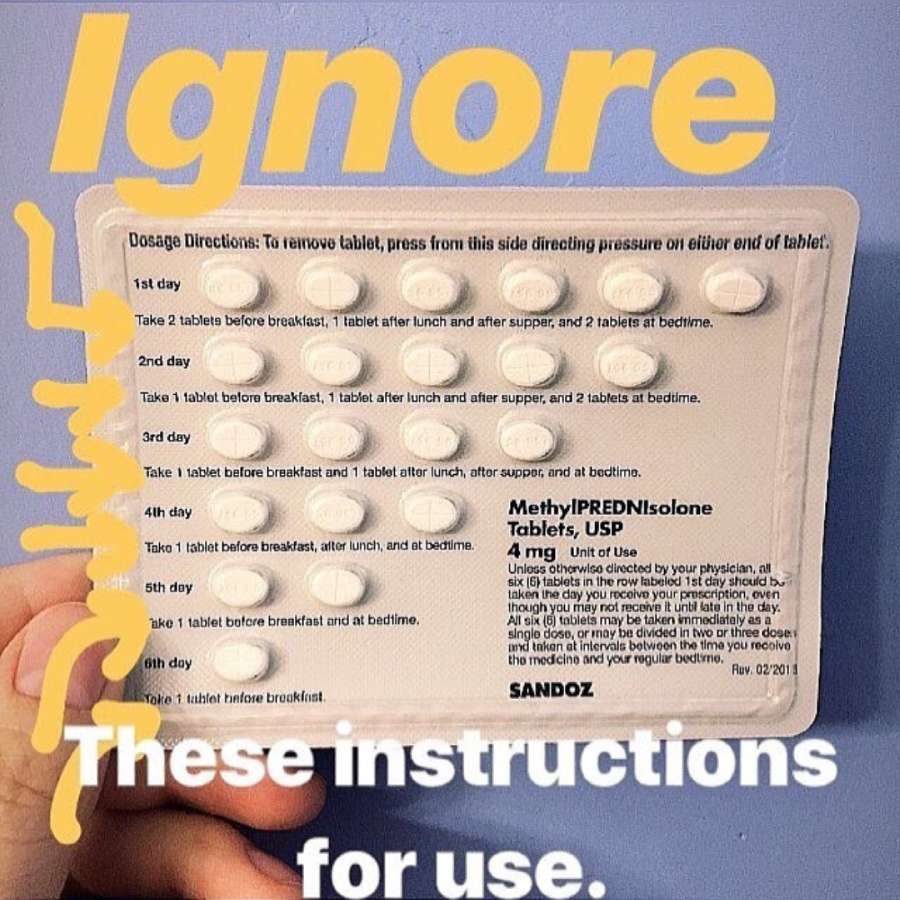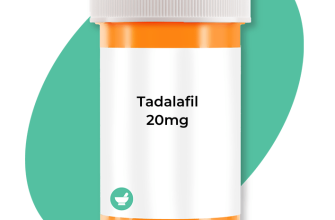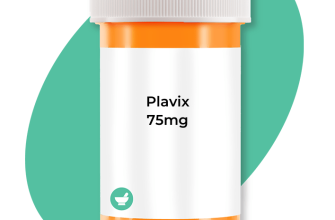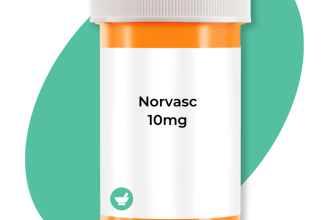A six-day prednisone prescription often serves as a targeted approach to manage inflammation and autoimmune responses. Patients commonly receive this short-term treatment for conditions such as asthma, allergies, or certain skin disorders. Sticking to the prescribed dosage is crucial, as it ensures maximum effectiveness while minimizing potential side effects.
Follow your healthcare provider’s instructions closely. Typically, this regimen involves a tapering schedule, where the dosage decreases over the course of the six days. For instance, you may start with a higher dose on day one, gradually reducing it daily. This method helps to mitigate withdrawal symptoms and maintains steady medication levels in your bloodstream.
Monitor your body’s response throughout the treatment. Some individuals experience side effects such as increased appetite, mood changes, or difficulty sleeping. Stay in touch with your healthcare team if you notice anything concerning. Open communication can lead to adjustments that enhance your comfort during medication.
After completing the prescription, assess your symptoms. If issues persist, consult your doctor about further evaluations or alternative treatments. This approach not only promotes effective healing but also empowers you to take charge of your health.
- Six Day Prednisone Prescription
- Dosage Guidelines
- Monitoring Side Effects
- Understanding the Purpose of a Six Day Prednisone Course
- Common Conditions Treated
- Dosage and Administration
- Dosage Guidelines and Administration Tips for Prednisone
- Expected Benefits and Potential Side Effects of a Short-Term Course
- Monitoring Effectiveness and Adjustments During Treatment
- When to Contact Your Healthcare Provider During a Prednisone Regimen
- Signs of Allergy or Severe Reaction
- Physical Symptoms to Watch For
Six Day Prednisone Prescription
When prescribed prednisone for six days, follow your physician’s direction closely. This short course of corticosteroids helps manage inflammation and suppress the immune response.
Dosage Guidelines
Typically, a six-day prednisone course follows a tapering schedule:
- Day 1: 60 mg
- Day 2: 60 mg
- Day 3: 40 mg
- Day 4: 40 mg
- Day 5: 20 mg
- Day 6: 20 mg
Take the medication with food to minimize stomach upset. Adjust your dosage only if instructed by your healthcare provider.
Monitoring Side Effects
Watch for potential side effects:
- Increased appetite
- Weight gain
- Sleep disturbances
- Blood sugar fluctuations
- Mood changes
Contact your healthcare provider if you experience severe reactions, such as shortness of breath, swelling, or persistent mood swings. Regular follow-ups help manage any concerns.
Complete the entire course as directed. Stopping prednisone abruptly can lead to withdrawal symptoms; always consult your healthcare professional before making changes to your regimen.
Understanding the Purpose of a Six Day Prednisone Course
A six-day prednisone course aims to quickly reduce inflammation and suppress the immune response in conditions like allergies, asthma, and certain autoimmune diseases. This short treatment duration minimizes side effects while providing immediate relief. As you begin this course, it’s crucial to follow the prescribed dosage closely to maintain effectiveness and avoid complications.
Common Conditions Treated
Prednisone is utilized in various conditions, including:
| Condition | Description |
|---|---|
| Asthma | Reduces airway inflammation and eases breathing. |
| Allergic Reactions | Helps alleviate severe allergic symptoms and swelling. |
| Autoimmune Disorders | Suppresses immune response to manage symptoms. |
Dosage and Administration
Each day, the dosage typically decreases to allow the body to adjust gradually. Adhering strictly to your healthcare provider’s plan is vital. Monitor for any side effects and consult your doctor if you experience significant issues, such as increased mood swings, gastrointestinal upset, or unusual weight gain. Understanding the reason for your prescription can empower you to manage your condition effectively and recognize signs that warrant medical attention.
Dosage Guidelines and Administration Tips for Prednisone
Follow your healthcare provider’s instructions regarding prednisone dosage carefully. Typically, a six-day course involves a tapering schedule, starting with a higher dose and gradually decreasing it. Commonly, you might begin with 60 mg on the first day, reducing by 10 mg each day until reaching a lower maintenance dosage.
Take the medication with food to reduce gastrointestinal discomfort. Water helps ensure that the tablet dissolves properly, so drink a full glass for optimal absorption.
If you miss a dose, take it as soon as you remember unless it’s almost time for your next dose. Never double up on doses; maintaining a consistent schedule is crucial for effectiveness.
Keep track of any side effects and communicate with your healthcare provider about any significant changes, such as unusual weight gain, mood changes, or stomach pain. Regular follow-ups can help adjust your dosage if necessary.
Limit your exposure to infections during treatment, as prednisone can suppress your immune system. Practicing good hygiene and avoiding close contact with sick individuals is advisable.
Do not abruptly stop taking prednisone, especially after prolonged use. Gradually tapering off helps minimize potential withdrawal symptoms. Your healthcare provider will outline a suitable tapering plan.
Store prednisone at room temperature, away from light and moisture. Keep it out of reach of children, and dispose of any unused medication safely.
Stay informed about potential interactions with other medications, especially over-the-counter drugs and supplements. Always discuss your complete medication list with your healthcare provider.
Expected Benefits and Potential Side Effects of a Short-Term Course
A six-day prednisone regimen typically yields significant anti-inflammatory benefits. Patients often experience rapid relief from symptoms associated with conditions like asthma, allergies, and autoimmune disorders. The reduction in inflammation can enhance respiratory function, lessen skin irritation, and alleviate joint pain. Many report improved overall comfort and a return to daily activities without the burden of discomfort.
Despite these advantages, some individuals may encounter side effects from short-term prednisone therapy. Common reactions include increased appetite, mood swings, and insomnia. Some might experience gastrointestinal issues, such as indigestion or nausea. It’s essential to monitor these symptoms, as they can vary based on individual sensitivity and dosage.
In rare cases, short courses of prednisone can lead to elevated blood sugar levels, particularly in those with pre-existing diabetes. Patients should consult their healthcare provider regarding potential impacts on glucose management. Those with a history of mood disorders might notice heightened anxiety or irritability.
Healthcare professionals usually recommend maintaining open communication during this treatment. Monitoring any adverse reactions ensures a timely response, allowing for adjustments in dosage or alternative treatments if necessary. Understanding both the benefits and potential side effects enhances the overall experience and satisfaction with the treatment.
Monitoring Effectiveness and Adjustments During Treatment
Track your symptoms daily. Keeping a detailed log helps you and your healthcare provider assess how well the six-day prednisone treatment is working. Note any changes in your condition, side effects, or new symptoms. This data empowers you to make informed decisions about your treatment.
Regular check-ins with your healthcare provider are key. Schedule follow-up appointments to discuss your progress. These meetings allow for adjustments to your dosage or treatment plan based on your response to the medication.
Pay attention to potential side effects. While prednisone can alleviate inflammation, it may cause increased appetite, mood swings, or sleep disturbances. Monitor these effects closely. Share any concerns with your provider, as they may suggest strategies to manage side effects or modify your treatment approach.
Evaluate the dosage promptly. If symptoms improve significantly, your provider might consider tapering off the medication earlier than planned. If you notice little to no improvement, a reassessment of the treatment plan may be necessary.
Utilize additional supportive measures. Incorporate a balanced diet, hydration, and moderate exercise to help enhance your overall well-being during treatment. These factors can contribute to your body’s ability to respond positively to prednisone.
Stay informed about your condition. Understanding your health issue can help clarify expectations for your treatment outcomes. Seek reliable resources and communicate openly with your healthcare team for tailored advice.
When to Contact Your Healthcare Provider During a Prednisone Regimen
Contact your healthcare provider if you experience any side effects that feel severe or unusual. Common side effects include mood swings, increased hunger, or difficulty sleeping. If these symptoms become overwhelming, reach out for guidance.
Signs of Allergy or Severe Reaction
- Rash, itching, or swelling, especially of the face or tongue.
- Difficulty breathing or shortness of breath.
Physical Symptoms to Watch For
- Severe abdominal pain or gastrointestinal issues.
- Signs of infection such as fever, chills, or persistent sore throat.
- Unusual weight gain or swelling in your ankles and feet.
If you notice increased blood pressure or sugar levels, especially if you have a history of hypertension or diabetes, notify your provider promptly. Regular check-ups for these parameters during your treatment are beneficial.
For any new or worsening symptoms not mentioned here, do not hesitate to contact your healthcare provider for advice. Monitoring how you feel during treatment is essential for your health and well-being.










